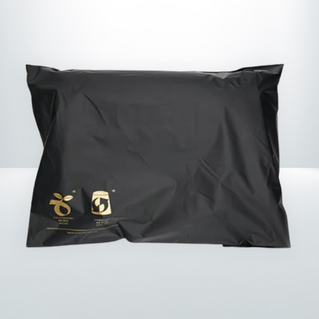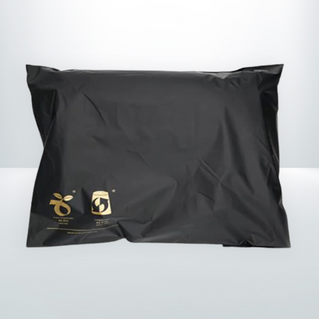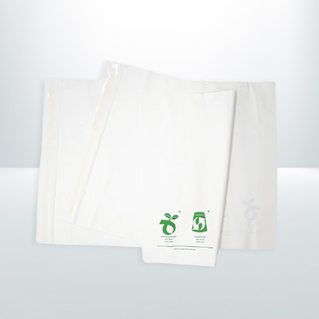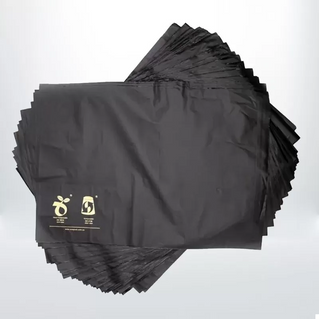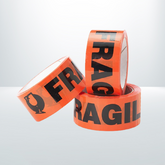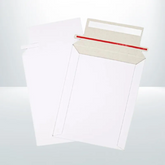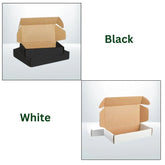Sustainability is multifaceted, and it does not escape the fact that among others, the packaging of your products plays a critical role in your sustainability approach.
Through this guide, you will enter a whole new dimension of sustainable packaging in the textile industry and discover all the opportunities, advantages, and potential benefits in the monetary value of your brand's images.
As promised, we now delve into the fine details of Green Packaging and how you can help the business and society embrace eco-friendly packaging strategies.
Why Eco-Friendly Packaging Matters
The discovery of why packaging is important in terms of being eco-friendly is an important step toward achieving a positively sustainable future. The decision you make for today may weigh heavily on the environment tomorrow. The choice of compostable packaging of clothing is probably not just a business decision made by you for your brand in this case. It is more as if you are an activist for the planet, the future generations, and your fight for the cause of anti-consumerism.
It is not a trend that involves carrying around those special compostable clothing packaging that people use every day; it addresses the global waste problem instead. A traditional packaging material contributes immensely to the land and toxic pollution. You decide to go organic with your dressing, which means you are opting for environmentally friendly alternatives as compared to shedding waste in the community.
Packaging made by sustainable clothing can decompose years later, thus making it different- that it will not be in our ecosystems in the future after centuries. It is not simply about doing the right thing but very much noting that people nowadays no longer have to jeopardize the health of earth for the sake of getting some more money or keeping the beauty of some product at some high price.
Sometimes it might look that people are helpless and powerless but this is an illusion because it is not so. Whenever your clothes business uses compostable and environmentally friendly packing, it sends the appropriate message to customers, which you can showcase in proving that you care about the planet just like they do.
Benefits of Compostable and Sustainable Packaging
Your products will be more attractive to eco-friendly consumers and grow your profit from the compostable and sustainable packaging. It is a relevant vision, indeed, ecological in saving carbon, but also social in branding.
Four paramount advantages of going for compostable and sustainable packaging: Four paramount advantages of going for compostable and sustainable packaging:
Cost-Effectiveness: Even if recycling could be expensive for the companies adopting its use, it might, over time, include reduced costs for disposal. Similarly, in tax terms, it would be beneficial for such companies to adopt the strategy.
Attracting Customers: Environmental consciousness grows among consumers. So, individuals considering the environment and using only products in compostable packaging become their clientele.
Brand Reputation: Remember, people do not buy products; they buy brands. Eco-friendly packaging sends a clear signal of concern for environmental issues and can catapult your brand name internationally.
Less Waste: Biodegradable packaging harmlessly decomposes into very few remnants that are ever disposed of through open air because of the environmentally sustainable limits imposed in landfills.
Top Eco-Friendly Materials for Packaging
Thereafter, this discussion will clarify a few of the best sustainable packaging materials thought to work best with packaging your products.
The first aim is to replace ordinary consumption with cardboard and paper by choosing recycled cardboard and paper. They are also reusable and biodegradable; thus, they would be great for packing that could be termed to be eco-friendly. It has flexibility in forming into any shape one desires and is compatible with any fabric used in apparel.
Cornstarch, as a product, is a very good new material that is environmentally sensitive. Less energy is consumed in producing this material than pin lastic production, and cornstarch can be recycled with ease. It is also to be noted that the cornstarch package dissolves into water and hence is not harmful to the environment.
Mushroom packaging is therefore rightly an exciting topic in terms of green packaging. It is derived from the root structure of mushrooms-and is said to be as strong as fiberboard, and is environmentally friendly and biodegradable, as it can be composted in one's backyard.
Natural materials should not be entirely dismissed since they are equally fit for conception like cotton or hemp. They are eco-friendly, recyclable, and easy to use in packaging among other things. Besides, they add sophistication to your product display.
Cost Analysis: Traditional Vs Eco-Friendly Packaging
Even though in practice it appears expensive to use environmentally sustainable packaging, price variations between traditional and ecological alternatives still have to be considered. So here goes the analysis:
Initial Cost: Yes, while initially, the eco-friendly packaging will be expensive since the eco-friendly materials are largely more expensive than other ordinary materials, one must consider this as an investment for better branding, as well as a green future for our planet.
Long-Term Saving: Still, sustainable materials turn out to be cheaper in the long run than the other materials available. Lesser wastage means lesser raw material consumption, thus lesser costs.
Customer Loyalty: It can be asserted that there is now a growing group of customers willing to buy these products, irrespective of higher prices as compared to normal products, since they are aware of the ecology of their respective countries and the rest of the world. This might translate into increased sales through more extensive promotional campaigns aimed at the biggest commercial players.
Government Incentives: Some regions have tax incentives or subsidies for businesses that are using sustainable practices thereby reducing the fiscal burden.
Implementing Green Packaging in Your Business
Green packaging and design, as applied within your business, have several advantages for the environment and your company, where brand image can be improved, eventually leading to higher profits. Green has become almost an industry standard, and by adopting the green culture within your business, you are communicating something important to your customers. You are letting them know you care about the future of our planet, which automatically leads them towards a positive view where they are more inclined to display loyalty toward you.
Green packaging is not a flip switch to be pressed; it is a procedure to be undertaken. The first process is to assess the options of existing packaging material. This would involve checking how environmentally friendly or environmentally spoiling that material is and how green it is as an option. Work with suppliers that share the same vision about sustainability; otherwise, the green materials used may not be sustainably sourced.
Do not fail to communicate about your environmental efforts to your consumers, such as when these alterations are suggestions to be made, as well as the reasons behind it. This will further enhance your possible brand image together with the consumer's goal of this report.
Types of Eco-Friendly Packaging for Clothing
Having established that integrating ecological concepts is advantageous to one's business, it is now important to learn more about various types of biodegradable clothing packaging. It saves the environment from the prevalent harms of products that could have been utilized if they were not recycled. The movement also targets consumers who are becoming conscious of the environment and willing to assist in its preservation.
Here are four types of eco-friendly packaging options you can consider:
Recyclable Cardboard Boxes: The above boxes are manufactured from post-consumer waste and therefore the packaging material used is fully recyclable. It is quite strong thus offering good protection for your garments in the case of transportation.
Biodegradable Plastic Bags: It is also very apparent that these bags are made from materials that are plant-based so that they can degrade harmlessly into the environment when they are at some point discarded.
Compostable Mailers: These are made from a mixture of corn-based biopolymers. Under composting conditions, it will be broken down within a period of 6 months.
Recycled Tissue Paper: This is cut to the dimensions used for wrapping clothing items in the box and is made from recycled paper, hence is biodegradable.
Time to take action! Eco-friendly packaging is not just a responsible choice; it is also a strategic one. Switching to this kind of packaging can save the earth as well as attract numerous consumers interested in sustainability. So, what type of packaging will you select?
Frequently Asked Questions
Which Misconceptions Do People Have About Eco-Friendly Packaging for Clothes?
Many people might think that eco-friendly packaging is flimsy and unaesthetic, but it is actually more often robust, innovative, and better looking. There's certainly the myth that it's too expensive, and although there are initial costs involved, it's possible to overcome them with savings over time as well as improved brand image.
How to Persuade Customers to Recycle or Compost Eco-Friendly Clothing Packaging?
Mark any eco-friendly apparel package as recyclable or compostable. Provide instructions and highlight what nature would gain by recycling or composting.
Are There Certifications or Labels for Which I Should Look When Choosing Eco-Friendly Packaging?
Yes, you should search for certifications like Forest Stewardship Council (FSC), Green Seal, and Biodegradable Products Institute (BPI) so that you can be sure that your choice of packaging materials is eco-friendly and sustainable.
Conclusion
So, shall we make, then, the eco-switch? Great! Sustainable packaging for your clothing brand is thus not only an act of kindness but also good business sense.
It shows that you care for your consumers, allowing their differentiation, and enhancement of brand image. This may cost you more in initial investment, yet the long-term benefits are worth it.
Together as one, we will take over the fashion industry with eco-friendly packaging. After all, green is the future of fashion!


